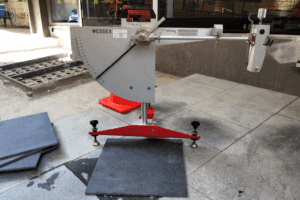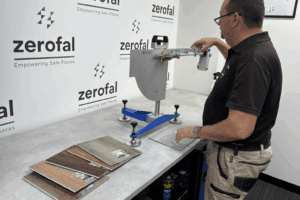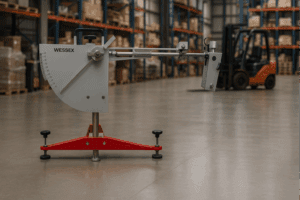How Often Should You Be Testing? A Risk-Based Guide
How Often Is Often Enough?
Slip resistance should be tested routinely, not just once. Under AS 4663-2013, frequency depends on surface type, usage, and site risk—ranging from every 3 months in busy areas to annually in lower-risk environments. You should also test after any treatment, polish, near miss, or change in cleaning. This guide shows how to build a defensible testing schedule.
Slip resistance isn’t a one-and-done obligation—it’s an ongoing safety measure. Surfaces wear, coatings degrade, cleaning practices change, and so does your compliance status.
Australian Standard AS 4663-2013 is clear: pedestrian surfaces should be tested as they are used. That means post-installation, post-treatment, post-incident—and routinely over time.
But how often is “routinely”? That depends on your risk profile.
Suggested Testing Frequency by Surface Type
| Environment | Recommended Testing Interval |
|---|---|
| Shopping centres, hospitals, public foyers | Every 3–6 months |
| Office environments | Every 6–12 months |
| External walkways, entries, or ramps | Every 6–12 months & post-resurfacing |
| Sites with previous STF incidents | Next scheduled test, plus post-remediation |
| Surfaces with new sealants/coatings | Immediately post-treatment |
| Schools, universities, aged care | Every 12 months |
Trigger-Based Testing Is Just as Important
Even if you’re within your cycle, you should also test:
- After any polish, sealant, or resurfacing
- Following a near miss or injury event
- When cleaning regimes or chemicals change
- Before handover of new or refurbished zones
Why It Matters
Slips, trips & falls remain a top cause of injury claims in Australia. Regular testing gives you:
- Documented due diligence under WHS law
- Performance tracking over time
- A defensible position in claims or insurance reviews
- A reliable basis for flooring and cleaning decisions
At Zerofal, we provide routine site testing under AS 4663-2013, using wet pendulum and dry friction methods. We’ll help you set a testing schedule, interpret results, and reduce risk—before someone gets hurt.
Not sure when you last tested? It might be time.
Is Your Testing Schedule Up to Date?
Slip resistance obligations don’t stop at install. Zerofal helps you build and manage a practical testing calendar for all your pedestrian surfaces.
We test:
- Shopping centres & foyers
- Aged care, education, and public access zones
- External ramps and walkways
- Sites with known Slips, Trips & Falls risk
Explore more

Colour, Grit and Surface Finish: How Subtle Differences Change Slip Ratings (AS 4586:2013)
Colour, grit and finish change slip resistance. Learn why P-ratings vary across tile ranges and coatings

Why One Slip Test Isn’t Enough for Product Lines (AS 4586:2013)
Slip resistance varies across colours and finishes. Learn why one AS 4586 test cannot certify an entire product line.

Industrial Slip Resistance: Dust, Boots & Coating Drift (AS 4663:2013)
: Industrial floors change fast. Learn how dust, coatings and machinery reduce slip resistance and why AS 4663 onsite testing is essential.
Stay Ahead of Safety Standards
Join the Zerofal newsletter for actionable insights on slip testing, compliance updates, and smart prevention strategies. No spam – just practical safety advice.
